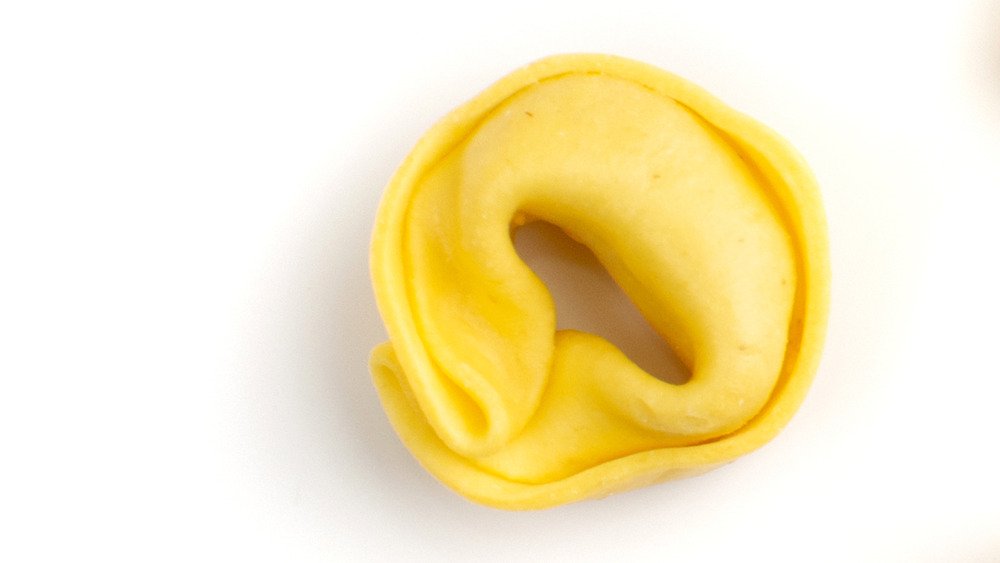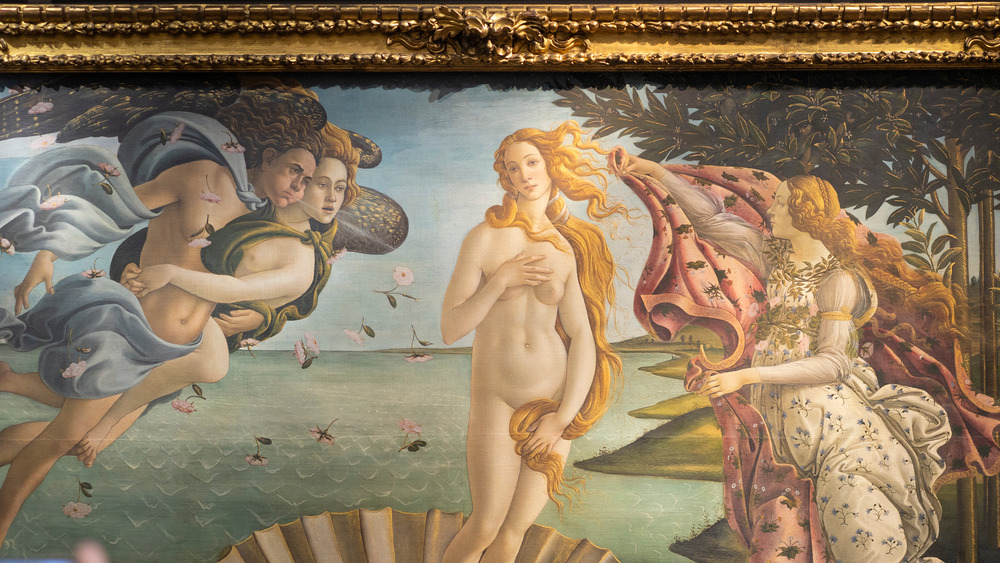The Creepy Story Behind Tortellini Pasta
There may be as may as 500 different pasta shapes across Italy, and some have some pretty funny names, according to Italy Explained. From what we can tell, the funniest one, by far, is strozzapreti, which translates from Italian into "priest strangler." The reason we say "funniest" instead of "creepiest" is that the name was inspired by the shape of this pasta, which is said to resemble a clerical collar; a clerical collar is sometimes known as a "priest choker." Presumably, "strangler" and "choker" mean roughly the same thing in Italian, despite that in English, they have different connotations.
Now, tortellini, by contrast, has a rather straightforward name. It translates from Italian as "small cake" or "small pie," which arguably, it could be said to resemble (via Merriam-Webster). And so it would seem there is nothing funny or creepy about the tortellini. But things aren't always as they seem. As NPR reported, tortellini's name belies its true and totally creepy inspiration, which has nothing whatsoever to do with cakes or pies of any size. Follow along for the creepy story behind tortellini pasta.
Tortellini's creepy origin story may make it the original "creepypasta"
Small and ring-shaped, tortellini begins its life much the way ravioli does, which is to say, it starts out as a filled-pasta-pasta pillow, either triangular or crescent-shaped. But instead of being left to lay flat, the ends of the pillow are brought together to form a loop (via Italy Explained). The end result is a ring-shaped circumference with a smaller bean-shaped protrusion at its center. Now, think for a moment. What does a piece of tortellini look like to you?
If you said either "belly-button" or "navel," then bingo. Of course, there is nothing creepy about vestigial stump of what was once our umbilical cord (via Kids Health). Rather, what is creepy is how tortellini's umbilical-stump-like shape was inspired. According to NPR, a local legend says that Venus, the goddess of love, once stayed at an inn, whose innkeeper spied on her through the keyhole in her door (ew, creepy). What he saw, presumably among other things, was the goddess' exquisite navel. Upon witnessing her belly button, the tale goes that he ran to his kitchen and created a pasta shape that resembled it (via NPR).
The only problem with this story is that no one really knows whether gods and goddesses actually have navels. That's why a competing legend explains that the woman was not Venus but Lucrezia Borgia (via Italy Explained).

